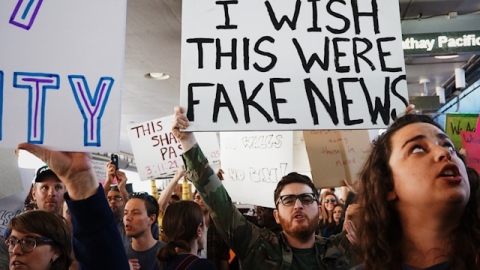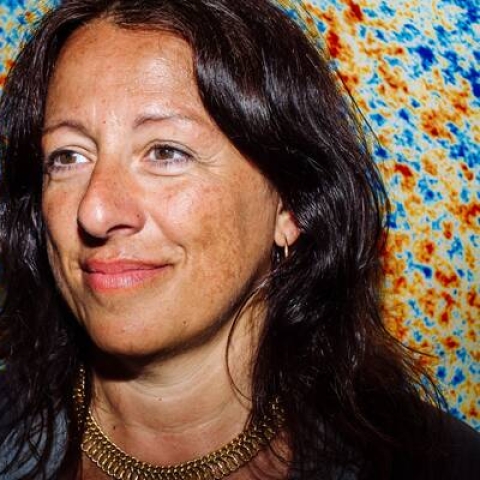

Secondary school students are more switched on when it comes to science-based conspiracy theories, according to a new study.
25 July 2024
8
A new study investigating young people’s susceptibility to scientific misinformation has revealed which sources they trust the most – and the results might surprise you.
Unsubstantiated scientific claims pose an existential threat to humanity, disrupting our ability to respond to major challenges like pandemics, antibiotic resistance, climate change, and food scarcity.
It’s not a recent phenomenon, but the advancement of technology means its impact is far-reaching. Over the last few years alone, the widespread popularisation of AI and large language models like ChatGPT has made it easier for creators to spread media misinformation.
Researchers from the University of Portsmouth surveyed 776 secondary school students at a school in Hampshire to put their fake news radars to the test.
The vast majority of participants – aged between 11 and 16-years-old - were able to correctly identify scientific disinformation and unintentional misinformation as not true.
When asked to rank their source of scientific news from a list of options, students’ first choice was school teachers, followed by TikTok and news websites like BBC or Sky News. The least used sources were newspapers, Facebook, and magazines.
BBC (including BBC News and BBC Bitesize) was the most frequent example of a trustworthy source according to the students, followed by teachers and books.
Sources deemed most untrustworthy were TikTok, Wikipedia and YouTube. Social media was still indicated as a popular source of scientific news, but students expressed critical awareness of the prevalence of misinformation circulating on them.
We’re living in a post-truth era, where people are exposed to fake news and conspiracy theories on a regular basis.
Dr Alessandro Siani, University’s School of Biological Sciences
Lead author, Dr Alessandro Siani from the University’s School of Biological Sciences, had a fake news article on vaccine risks wrongly attributed to him last year.
He said: "We’re living in a post-truth era, where people are exposed to fake news and conspiracy theories on a regular basis. With nearly half of internet traffic generated by bots, and misinformation weaponised for economic and political gain, we must be equipped to discern facts from fiction, especially in health and science.
“We decided to focus on secondary school students, as these years are a fundamental period in the development of abstract reasoning, decision-making and critical thinking skills.
“It’s an encouraging finding that students identify teachers as their primary source of scientific news. It says a lot about the trust in their teachers, and the importance of education.”
The findings, published in Discover Education, revealed students had considerably lower belief in common science-based conspiracy theories compared to a recent survey of the adult British population. When asked to score statements between false and true, only six per cent of students ticked true for “Global warming is a myth”, compared to between 9-32 per cent of British adults.
Only five per cent of the teenagers believe vaccines are not safe (compared to 18-24 per cent of British adults), and 11 per cent think humans never landed on the moon (compared to 13-21 per cent of British adults).
“The suggestion that young people are less misinformed than adults might sound counterintuitive”, explained Dr Siani.
“But the YouGov poll suggests belief in scientific fake news - particularly those regarding climate change and vaccines - can increase with age. This could be because older generations aren’t as familiar with the online environment and may be more vulnerable to believing unreliable sources.
“Also young people’s concern for the environment might drive them to seek out a variety of scientific sources and research the subject more thoroughly.”
While misinformation levels were very low among the entire group, the survey also revealed a further decline across the five years of secondary education.
Dr Siani added: “This research further demonstrates how valuable science education is in preventing harmful, fake information circulating. Good scientific literacy implies learning both the scientific concepts and the wider critical thinking skills, but curricula/exams focus largely on the former. This has the potential to leave students ill-equipped to spot more sophisticated mis and disinformation.”
Over the course of their secondary studies, students were progressively less likely to express an interest to pursue further scientific studies after completing compulsory education.
Co-author, Claudiu Dacin from The Cowplain School in Hampshire, said: “It is incredibly rewarding to witness the positive impact that teachers have on young people, particularly in their ability to discern between real and fake news.
“The COVID-19 pandemic has highlighted the harmful effects of misinformation, and these results show the crucial role that teachers play and the trust that students place in them. However, there is still significant work to be done, especially in encouraging more students to pursue careers in Science. This effort is vital at the secondary school level, as students' engagement and interest in these subjects often decline over time.
“The current GCSE syllabus can sometimes be dry and overly focused on factual teaching, rather than fostering critical thinking and problem-solving skills. In an age where students have access to vast amounts of information at their fingertips, it is essential that they also learn to think critically and solve problems effectively.”
The paper recommends allocating adequate funding and staffing to schools and universities should be prioritised by the government and considered not as an expense, but rather a long-term investment to ensure that the British scientific sector - and society at large - remains innovative, competitive and sustainable.
More like this...
Academic warns of the dangers of misinformation after fake news article on vaccine risks goes viral
23 February 2023
6

Portsmouth academics in top two per cent of researchers in the world
Over 40 academics from the University of Portsmouth are among the top two per cent of the most cited scholars in the world.
25 October 2023
6 min read

COVID vaccines: should people under 50 in the UK be offered a fourth dose?
1 December 2022
7 min read

